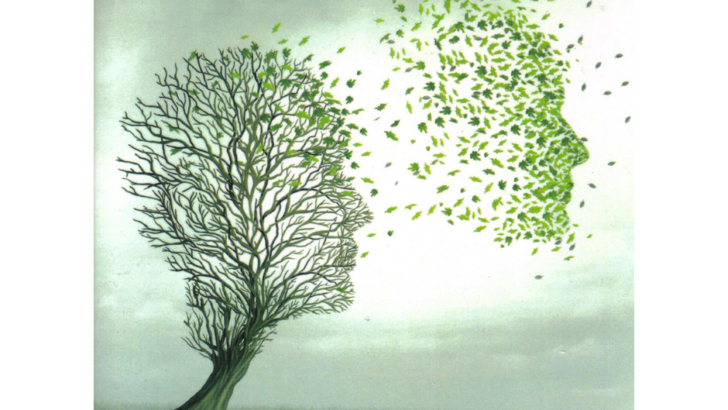Mam an’ Me: Living a Life Time in a Day
by Kieran J. Coote, with a foreword by Dr Marie Murray and an afterword by Áine Lawlor (Red Stripe Press, €12.99 / £11.00)
The very striking cover on this book is a piece of art by Steve O’Neill, evocative of what happens with the onset and progress of dementia. One by one, the leaves of memory wither and fall, and though the bones of a human being are left, the personality has somehow drifted away.
We talk so casually in daily life of ‘turning over a new leaf’, but for those with dementia there are no new leaves to turn over, nothing to replace the ones that are lost. No new memories can now be retained. Nothing except perhaps the feeling of love returned.
In this book Keiran J. Coote describes a typical day caring for his aging mother in some ten chapters overviewing a single passing day from setting up in the morning to settling down for the night.
It is a deeply moving book, which presents the daily round as a series of little triumphs and few saddening failures. But it is suffused with a warming love, a sense of the past and the past life of his mother, a life well lived, now coming to its close.
Whatever the experts may say about the affliction, this is a fine book which should be welcomed for its success giving a human dimension of a passage in life which many may not want to think about.
The feeling of losing control has to be assuaged by the established routines of the day and part of the night, which manage to be both predictable (though his mother no longer has the power of prediction), to provide the essential comfort of feeling that with everything arranged for one is not quite lost.
Coote plays down the difficulties to emphasise the effort to achieve a daily continuity, a continuity which is essential to supporting the frail and failing mind of his mother.
In comparison with other books dealing with dementia by therapists, this is a deeply human book. This is how it is for one loving son at least. It is this atmosphere that makes the book so readable, so deeply moving, and in the end, I suspect, so important to others in the same situation.
This is truly a book worth reading. I know that reviewers say this kind of thing all the time. They always truly mean it. But there are also times when one would like to award a book an extra gold star of recognition. This is one of them.


 Peter Costello
Peter Costello Art work by Steven O’Neill reflecting the spirit of Kieran J. Coote’s memoir
Art work by Steven O’Neill reflecting the spirit of Kieran J. Coote’s memoir